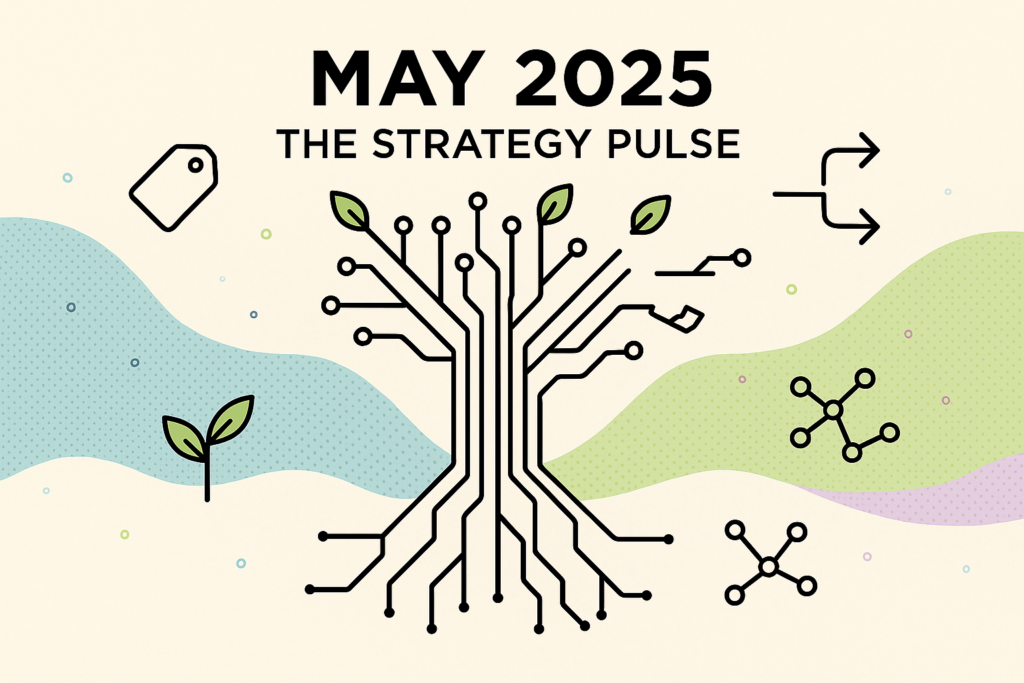Author: rhianna@fifteenten.co.uk

Starting a new job in style: the art of a great first impression
Starting a new job in style: the art of a great first impression
March 3, 2022

You’ve officially done it. You applied for the job, went through the arduous hiring process, and you’ve come out the other end successful. You’ve signed your new contract and bid your old job farewell. The hard part is over. Now, all you have to do is waltz into your new office on day one, armed with confidence, and you’re guaranteed to be a hit. Right?
If only it were that easy. As exciting as a fresh start can be, beginning a new job is often quite a daunting experience. Many of us have undoubtedly suffered through that dreaded sleepless night before the big first day; you toss and turn, the hours crawling by, as your mind whirrs away at a hundred miles per hour.
Whilst it’s completely normal to experience these first day jitters, there are proven ways you can reduce your anxiety in the build-up to a new job. Ensure that you’re making the best possible first impression by following these basic principles during the early stages in your new role.
Come prepared
There are steps you can take before even stepping foot in the office to make sure you’re as prepared as possible for your new job.
Create a positive first impression by asking your new boss if there’s any way you can prepare in the lead up to your future role. Instead of twiddling your thumbs and worrying about anything you could be doing to stand you in good stead, be proactive and lay the groundwork for future success.
Ask your boss whether there’s any company material or resources you can get your hands on beforehand. Or, ask if there are any tools or processes you should become familiar with before getting started on the job. However, the key is not to overdo it. You don’t want to come across as a nuisance, pestering your boss before you’ve even begun. Show willing, but don’t be pushy.
Just remember: the more prepared you feel beforehand, the less you feel like you’re diving head-first into the unknown.
Look the part
So, the day has finally come. Your new job begins today. You hop out of bed and fling open your wardrobe doors: a whole new wave of anxiety washes over you as you ruminate over what to wear.
There’s an easy way you can steer clear of this dilemma. Have a clear sense in mind of the dress code by researching it beforehand. And if your research proves fruitless, then it’s always better to be overdressed than underdressed.
To make sure that the morning of your first day at work runs smoothly, choose your outfit the evening before and lay it out ready for the day ahead. This will help you avoid any unnecessary stress that would otherwise cloud your morning.
Don’t underestimate the power of a smart work outfit. Research by Princeton psychologists Alexander Todorov and Janine Willis concluded that people form a first impression in just a tenth of a second; so, appearances really do count. Choose clothes for work that you feel outwardly express your best qualities; an outfit speaks a thousand words.

The way you dress at work, especially in the early days, can have an impact on your performance as well. Subconsciously, dressing well and putting an effort into your appearance can make you feel more prepared and motivated for the day ahead. What you wear can have psychological implications; one study conducted by Northwestern University found that people performed better on a test when they wore a scientist’s white lab coat.
Arrive bright and early
To really ensure that you’re making that positive first impression from the very beginning, be sure to arrive early on your first day (and for the rest of your first week). When it comes to starting a new job, it’s an unspoken rule that arriving on time is the same as arriving late. Arriving early gives you a chance to gauge the lay of the land; to assess your surroundings before you’re bombarded by a sea of co-workers, which can be quite overwhelming. It’s wise to be one of the first people in the office so that you can meet your colleagues gradually rather than all at once.
Be eager to learn
Throughout the working day, do not shy away from asking questions. Pretending to know the answers to everything is a pointless endeavour, and it’s likely that those around you will respect you more for asking for help when you need it. In these initial stages of your new job, you have every right to establish exactly what’s expected of you and inquire when you face uncertainty.

However, make sure that the questions you’re posing actually add value to what you’re doing. You don’t want to ask questions for the sake of it, just to come across as keen and willing. If you’re confronted with a difficulty, the early stage of your job is the time to address it, but overbearing your colleagues with superficial questions can be transparent and bothersome.
Make sure to demonstrate that you’re actively absorbing helpful information that your colleagues give to you. Bring a notebook along during your first week to quickly jot down any useful snippets of information when you hear them. However, avoid using the Notes app on your phone to do this; regardless of how good your intentions may be, having your face glued to your phone can have a negative impact on your co-workers’ perception of you.
Being eager to learn also means being open to new ways of doing things. No matter how used to a certain routine you may be, avoid harping on about the superiority of old methodologies at your previous companies; be open-minded to new teachings, as you could learn a thing or two.
Get to know your colleagues
A great way to truly make a positive impression is by making a genuine effort to immerse yourself in your new team. During your lunch break, actively try to get to know your co-workers. Whilst trying to impress your boss is all well and good, creating a positive impression amongst your co-workers is what will ultimately make your transition into a new career as seamless as possible.
There’s one crucial thing to keep in mind, however. Be cautious that whilst you’re getting to know your colleagues, you remain professional throughout. Avoid engaging in petty office drama, as you don’t want to gain a negative reputation as a gossip. These early days are crucial in cultivating a positive impression. So, leave your personal problems outside of the office space and remain professional in your interaction with colleagues.
Have a gameplan
Use your first few weeks in a new job wisely. Now is this time to formulate a long-term plan. A good starting point is creating a 90-day plan, with clear goals and tasks that will get you to where you want to be. Use the early days to lay the foundations for long-term success, mapping out your path for the future.

Ultimately, there’s a crucial thing to keep in mind when starting a new job to keep the nerves at bay. Remember that this company already likes you. They chose to hire you, meaning that they saw your potential and envisaged you thriving at their company. All you need to do now is prove them right by bringing the best version of yourself to the table.

Is the old-school job board a thing of the past?
Is the old-school job board a thing of the past?
February 23, 2022

As technology becomes ever-more advanced, the question naturally arises: is the old-school job board a thing of the past?
For years, jobseekers have been turning to job board websites, such as Indeed or Glassdoor, as a first step towards a new career. We’ve all, at some point or another, opened up a new tab and scrolled mindlessly through job postings in pursuit of vaguely relevant and appealing openings, and then proceeded to send off our CV at the click of a button.
However, a trend seems to be emerging. As the internet evolves, jobhunters and employers alike are yearning for a more dynamic, engaging, and efficient job application process. For hiring managers, old-school job boards can feel like a bottomless pit of faceless mass applications. Employers prepare themselves for an influx of responses, hoping they’ll stumble upon a gem in a sea of coal.
For candidates, applying via job boards is a similarly mundane and anonymous experience. Upon applying, jobseekers can feel like they’re simply sending their CV out into the abyss.
With the rise of social media, the drawbacks of traditional job boards are becoming increasingly apparent. Is the death of the job board as we know it looming on the horizon?
What is a job board?
Job boards are online platforms dedicated to advertising job postings. Using job boards is an established method of finding potential employment opportunities.
Due to the sheer number of people that have been using job boards over the years, these platforms are a goldmine of potential candidates. The resume database on job boards gives companies access to millions of passive candidates. Recruiters and hiring managers alike can tap into this resource to access great talent.
The process of applying for a role via a job board is straightforward and user-friendly. With the click of a button, you can apply to multiple jobs in quick succession. You can also filter down your search to find relevant, focussed job opportunities.
There are many job boards out there; a huge selection from which you can take your pick. Many companies and recruitment firms tend to advertise more graduate and entry level roles on generalist job boards. Meanwhile, they often advertise more niche jobs on specialist job boards dedicated to roles in a particular field or industry.
With 64% of employers still using job boards to advertise openings, it would seem that the demise of job boards is still a relatively long way off.
Are they slowly edging towards irrelevance?
With constant technological innovation comes more innovation in the jobhunting process. As it stands, job boards constitute a pretty antiquated process, and they’re far from efficient.
Through using job boards, hiring managers tend to receive an influx of candidates, not all of whom are qualified for the role they’re applying for. The process can be infuriating; due to the ease with which candidates can apply to many roles at once, there’s often a lack of focus or specificity in their CV. It can feel like they’re simply hoping for the best, taking a stab in the dark and playing a numbers game by applying for as many roles as possible without tailoring their approach. If employers were to rely exclusively on job boards, they’d be depending solely on active candidates to fill their open positions. This would mean missing out on some of the best talent out there in a candidate-short market: passive candidates.

The process is no less exasperating for jobseekers. All too often, candidates will click the ‘apply’ button and be greeted with radio silence. Chances are, their CV is falling into a towering pile of other applications, sucked into a vacuum. Job boards lack a personal touch.
What alternatives are arising?
Both employers and candidates alike are seeking a more spontaneous and dynamic approach to the hiring process.
If candidates really want to put themselves out there and make themselves known to prospective employers, networking is key. Networking cultivates a human connection between hiring managers and candidates from the get-go. Due to the immense popularity of social media, the scope for innovative networking is huge.
There are numerous examples of individuals striving to stand out by approaching the job search in a unique way.
‘LinkedInfluencers’ are taking the platform by storm, with more and more people establishing a public presence on LinkedIn, cultivating a personal brand. These individuals are proactively putting themselves in the spotlight. By being so vocal on networking platforms, candidates are paving the way for job opportunities to come to them.
We’ve all heard the story of the unemployed banking and finance graduate, Haider Malik, who went viral after he stood outside Canary Wharf station holding up a sign displaying his CV. He was invited to an interview after just 3 hours, and ultimately landed his dream banking job. Disillusioned by the traditional approach, many candidates are finding more success by showcasing their personality and employing unconventional methods.
As of late, everyone’s been talking about the dating app Thursday, due to its innovative and quirky marketing campaigns. Their hiring methods are unorthodox, with many offers being made to interns who display unconventional creativity in their applications. For example, candidates have posted TikToks of themselves wearing placards advertising the dating app in public spaces, or composed a cover letter through putting songs together in a Spotify playlist.

Clearly, there’s a demand for personality to shine through in the application process. Recruiters also offer a more personal and human service to candidates and clients alike, taking out the arduous part of the process for hiring managers and prospective candidates by doing the heavy lifting for them. Recruiters reach out proactively to passive talent, source qualified candidates for specific roles, and filter the applications of active candidates from job board postings to ensure the best talent gets put forward for the role. They streamline the process and eliminate the clunky element of companies posting directly onto job boards.
Do job boards stand a chance of survival?
That’s not to say that job boards are now a fragment of a bygone era.
In order to survive, job board sites must evolve and innovate, incorporating other technological developments to remain relevant. As candidates and hiring managers alike are on the lookout for more dynamic and personal ways to breathe new life into the hiring process, job boards need to flesh out their offering and become more than a robotic application platform.
They need to start providing their users with a more varied offering. Job boards such as Reed and Indeed are leading the way on this, using social media and email marketing to advertise a range of certified skills training courses or valuable content to their users. They’re becoming more engaging, mixing the interactive elements of social media into the platform. Job boards need to embrace digital advances with open arms, injecting some new material into their platforms.
The traditional job board model is clearly contending with some serious competition. Recruiters source the right fit for job openings as opposed to inundating hiring managers with an influx of poorly-suited candidates. Furthermore, social media provides users with the chance to interact more proactively with prospective employers, making them feel less like an anonymous and faceless application in amongst a sea of a hundred others.
However, job boards clearly still form a crucial part of the hiring process for recruiters. Less companies are using them directly due to the inefficiency they’re confronted with on the platforms. If job boards want to remain relevant in the future, they need to catch up with the innovation materialising at a rapid rate all around them.
If you’d like help making your hiring process or job search as efficient and productive as possible, get in touch with our recruiters at contact@nicholsonglover.co.uk.

How to attract the best talent in a candidate-short market
How to attract the best talent in a candidate-short market
February 16, 2022

During the pandemic, the working world came to a grinding halt. Between August and November 2020, roughly nine million employees were depending on the government furlough scheme for their income.
However, the world of work is now gradually easing back into some semblance of pre-pandemic normality. We breathe a collective sigh of relief upon hearing the latest government announcement that all remaining coronavirus restrictions could end as early as this month.
The job market is bouncing back to pre-pandemic levels and beyond, as demand for new hires across the board is sky-rocketing to all-time highs. The market is brimming with opportunities, bubbling away to the point of overflowing.
There’s just one problem. As businesses confidently sprint towards the finish line of the pandemic, one major stumbling block stops them in their tracks: many jobs to fill, not enough candidates to fill them.
In the fallout of the pandemic, companies are being confronted with the challenge of a candidate-short market. The dramatic increase in demand for new hires is not matched by a supply of highly-skilled candidates. Roughly 1.5 million employees across the country remain on furlough, less EU candidates are available for employment as a consequence of Brexit and coronavirus restrictions, and the best candidates are snatched up by big corporates in a heartbeat.
This candidate shortage has led to many companies struggling to hire, especially those looking for highly-skilled candidates in niche fields. A Telegraph survey found that recruitment posed a significant challenge to a third of more than 1,000 business people.
So, what’s the solution to this conundrum? What methods should companies be adopting in order to hire and retain staff? Read on to find out.
Sell yourself
In a candidate-short market, the scales are tipped in the candidate’s favour. Top talent is in high demand, and in order to stand out against competitor companies, hiring managers need to craft an attractive offering.
It goes without saying that a competitive salary is likely to appeal to candidates from the outset. However, it would be wrong to presume that high quality candidates are simply drawn to the highest bidder. The reality is, if you really want to lure candidates in, you need to be furnishing an offer with attractive benefits that extend beyond a competitive salary.
By the time you make an offer, the power is in the candidate’s hands. Nowadays, candidates tend to have an established set of expectations from their prospective employer. These may include: more annual leave, flexible working, a healthy work-life balance, interesting and engaging work, professional development and learning opportunities, or training programmes.

Clients should not underestimate the power of an attractive benefits package; it could be the deciding factor that swings the pendulum in your company’s favour. If you think you’re going to win candidates over with beers on a Friday afternoon and a monthly team social, think again.
In today’s climate, companies also need to cultivate a strong personal brand. To stand out to candidates in a sea of other prospective companies, you need to craft a detailed and up-to-date EVP (employer value proposition), showcasing exactly what your company brings to the table and what makes you stand out from the crowd.
A powerful EVP is a major selling point; 51% of people would actually be willing to accept an offer at a lower wage if the company had strong employer branding.
A great way of showcasing your company’s EVP is through social media. Make the most out of your candidate-facing platforms by posting employee testimonials, company culture insights and case studies. Give your candidates a taster of life at your company that’ll leave them wanting more.
Revamp the hiring process
In order to present your company in the best possible light, create a positive first impression by making the hiring process a constructive and worthwhile experience for all parties involved. Nowadays, it’s all too common for job ads to read like fatal warning signs, cautioning you not to trespass further. They paint the hiring process as an arduous, never-ending challenge, in an attempt to scare off the ‘weakest links’ and initiate prospective employees through a baptism of fire.
This is an outdated and close-minded approach. At many companies, the hiring process is nothing more than a tick-box exercise in its early stages; great candidates are slashed from the list by hiring managers simply because they may not have the exact skillset or amount of experience required.
To attract the best talent in a candidate-short market, hiring managers should be more open-minded to candidates who may not match their desired profile exactly. They may be missing out on candidates with huge amounts of potential. Studies have shown that experience is actually the least reliable indicator of future success. So, instead of focussing on the number of years someone has been working in a particular industry, why not consider their potential instead?

If you really want to hire top talent in a candidate-short market, build a relationship with prospective candidates from the outset. Don’t treat candidates in a hostile way during the hiring process. Is your company’s hiring process engaging and personal? Concise and simple?
Don’t view the hiring process as a means of weeding out unsuitable candidates; view it as an ongoing conversation, an opportunity for both hiring manager and candidate to learn more about each other. Imagine it as a dating experience: you’re in the courting stage, but they’re probably still seeing other people. Use this time as a chance to woo and romance them. Put them at ease so you can truly get to know them.
Cut down on unnecessary steps in the process, making it less clunky and more efficient. This will be a positive for you as much as for the candidate; you’ll be bringing out the very best in people, and making the process more streamlined. Instead of rejecting candidates at the first hurdle who may not match your expected criteria point-for-point, look beyond strict expectations, and go into the process feeling more open-minded. You’ll be more receptive to talented individuals even if they may not fit the mould exactly, and you’ll be making a better first impression on all prospective candidates.
Don’t dilly-dally
A crucial part of an efficient hiring process is keeping communication prompt and consistent throughout. In a candidate-short market, you need to act fast. Not only is circling back a way of showing respect to prospective candidates, it’s also a way of remaining at the forefront of their mind so they don’t get snatched up by a competitor company.
If a talented candidate seems interested in a role at your company, don’t dilly-dally. Start forming a bond with them from the get-go, keeping them engaged. Throughout the hiring process, keep them in the loop regarding the status of their application.

And if you’d like to make an offer, don’t beat around the bush. Candidates are most likely courting other companies as well as your own, so make an offer to get ahead of the competition, and strike while the iron is hot.
Even if a great candidate happens to be unsuccessful this time around, maintain a relationship with them by communicating and giving them feedback. A role may crop up in the future that they could be perfect for. People are four times more likely to consider a company for future job opportunities if they received feedback from them during the hiring process.
Enlist a recruiter
At a time when quality candidates are in high demand, putting a job ad out into the abyss and hoping for the best is not the most effective means of attracting talent in a candidate-short market. Meanwhile, actively sourcing candidates is incredibly time-consuming, something that many hiring managers simply do not have the resources to do.
In which case. why not enlist a recruitment agency to help you attract the best talent out there? Recruiters have databases brimming with talented individuals. If you’re time-poor, using a recruiter’s candidate pool is a highly efficient method of alerting top talent to opportunities at your company. Tap into this resource in order to engage the best candidates on the market.
If you’re interest in attracting the best talent in the data, insight, or strategy sector. get in touch with the Nicholson Glover team via email: contact@nicholsonglover.co.uk.

Out with the old: the rise of the four-day work week
Out with the old: the rise of the four-day work week
February 7, 2022

Yes, you read that right. A four-day work week. Sounds too good to be true, doesn’t it?
Well, perhaps not. Offices in the UK are currently abuzz with the news of a trial taking place in June of this year, which will see around 30 companies across the country adopt a four-day work week for a six-month pilot period. The programme is being run by 4 Day Week Global, in collaboration with researchers at Oxford, Cambridge, and Boston Universities. The trial will aim to determine whether employees are able to maintain 100% productivity for 80% of the time, with no deduction in pay. News of this project has spread like wildfire, receiving a warm welcome across the country, and brightening up the bleakest months of the year.
Crossing our fingers and biting our nails in anticipation, we’re all thinking the same thing: this handful of companies better not screw it up for the rest of us.
A three-day weekend is no longer a mere pipe dream, a distant utopia that exists exclusively in your head whilst you fantasise on your lunch break. If all runs smoothly during this six-month trial, a four-day work week could become a tangible possibility for many employees across the country.
For decades, a five-day work week has been the begrudgingly-accepted norm. But society has seen dramatic changes in recent years. The question arises: need we rely upon the archaic model of a five-day week in the 21st century?
In the wake of the global pandemic, our collective attitude towards work has shifted. If you’d have told me two years ago that we’d all be working from home and seriously considering a four-day work week, I wouldn’t have believed you. But more and more companies are waking up to the fact that their employees do not need to be glued to their desks for 10 hours of the day, five days a week, in order to produce results.
Here at Nicholson Glover, our Senior Consultants have been enjoying a four-day week for around four months now (we’re ahead of the curve, we know). The results have been overwhelmingly positive thus far, and our co-director, Rudy Fernando, described the initiative as “a very small compromise for those that value their time”.
That’s not to say that a four-day work week is a quick-fix that, if applied nationwide, would solve all of society’s problems. It’s a complex issue, one that warrants deeper exploration.
Employee wellbeing
Take a moment to think about the countless ways you could spend your extra day off work each week. Fancy taking up a pottery class? Learning French? Joining a netball team? Or simply having a lie-in, doing your laundry, and getting your life in order? The choice is yours.
There is a lot more to life than work. Obvious as it may sound, this is something we tend to lose sight of when caught up in the whirlwind of our day-to-day lives.
As a society, we underestimate the importance of spending time away from work. To have an extra day each week to spend as we please – cultivating interests, catching up on sleep, seeing loved ones – would do wonders for our mental and physical health as well as our general wellbeing.

According to the charity Mind, 1 in 6 people in England report experiencing a mental health problem in any given week. Whilst there’s no easy remedy to this problem, a reduction of the working week would no doubt present an opportunity for individuals to take a deep breath, recuperate, and focus on self-care. New Eagle Hill Consulting research recently found that 83% of workers in the US are convinced that a four-day work week would help ease burnout.
Working excessive hours can have a hugely detrimental impact on employee wellbeing, and the work culture of Japan exemplifies this clearly. Japan is notorious for extreme working hours, and this intense attitude towards work leads to many individuals succumbing to stress-induced illness. In extreme cases, approximately 10,000 workers die each year from overwork, known in Japanese as karoshi.
Shortening the working week is a viable option that should be taken into consideration if solely for the sake of employee health and wellbeing.
Increased productivity
Employees aren’t the only ones who would reap benefits from a four-day week.
Companies could see a positive payoff too. Some traditional employers may consider the amount of hours worked per week as inextricably linked to productivity. This is an outdated assumption, as evidence shows that a shorter working week could actually dramatically improve the productivity of an organisation. Gone are the days of believing that whoever sits at their desk twiddling their thumbs for the longest is the hardest worker.
Rudy explains that “meaningful productivity is optimised when you empower people with the autonomy, freedom, and flexibility to get their work done when they need to”. Describing how the team made the four-day week work for them, he states that “the reality of condensing a 50-hour week into 40 hours is that, in order to compensate, we need to work more intensely during those 40 hours”.
Many companies have opted to pursue a four-day work week off their own bat, and the results speak for themselves. Microsoft Japan reported a 40% increase in productivity after adopting the progressive working model.
Furthermore, the employee wellbeing that stems from a shorter working week does not only benefit the individual, but the wider company as well. When employees are less stressed and burnt-out, the quality of their work will likely be higher. It could also save the company a significant amount of money, as poor mental health costs companies across the UK £33-42 billion per year. An overworked workforce is statistically more likely to take sick days, or experience decreased motivation at work.
A shorter work week could well improve the productivity of a business. But beyond that, it could help organisations cultivate a happier, more dedicated workforce.
Environmental benefit
A four-day work week does not only benefit employers and employees. It’s actually a more sustainable working model that could help to reduce air pollution.
If practically every company across the country implemented a shorter work week, this would mean that nationwide, commuting into work would be cut down by one whole day every week. This would have a monumental impact on the environment; a study commissioned by the Four Day Week campaign from Platform London determined that this would reduce UK emissions by 127 million tonnes, a decrease of over 20%. In other words, this would equate to taking the whole private car fleet across the UK off the roads entirely.

There’s another, perhaps less obvious way that a four-day week could reduce our carbon footprint. For an additional day each week, it’s likely that people across the country would be engaging in more low-carbon activities. The pace of life would be slower; less about quick-fixes to get you through the working day. For example, for one more day each week, you may opt to purchase fresh ingredients and take the time to cook that meal you’ve always been meaning to try, instead of settling for the last plastic-packaged frozen ready-meal left standing for convenience’s sake. Or, maybe you would opt to engage in a low-carbon activity such as cycling or running, as opposed to driving to the office for that one extra day each week.
Overall, the evidence decidedly points towards a shortened working week having a majorly positive environmental impact.
Difficult to implement
So far, we’ve presented the four-day work week as a pretty airtight model. However, one major crack remains on show: the shortened week would be near impossible to implement UK-wide in one fell swoop.
Despite the trial going ahead in June, we shouldn’t get our hopes up that a four-day work week is just around the corner. Chances are, there’s a long way to go yet.
A number of sizeable obstacles stand ahead on the road towards a universal four-day week. For one thing, the model is completely industry-dependant. In safety-critical sectors it would be difficult to draw such a clear line in the sand between work and free time by shortening the work week. For people in the public sector, for example in the military or NHS, a four-day week still seems a long way off.

And this is a small part of a much wider problem. Adopting a four-day work week is no easy feat, as it would be a massive cultural shift that would require an institutional overhaul. Our entire society is founded upon a five-day work week and functions around this established model. If the government were to snap their fingers and introduce a four-day work week tomorrow, we’d be in for a rude awakening, simply due to the fact that we’re not used to the structure. The adoption of a four-day week requires long-term and gradual financial, legal, and institutional changes before it stands a chance of succeeding.
However, that’s not to say it’s completely out of reach. A four-day work week is now a topical subject that is being put forward for serious consideration. It’s the talk of the town, and soon enough, cries for a shortened work week will be too deafening for many companies to ignore.

Data and Analytics Trends for 2022
Data and Analytics Trends for 2022
January 25, 2022

Nowadays, it’s becoming increasingly plain to see that data forms the backbone of every organisation out there.
Any business that views data analysis as a core business function is likely to be a well-oiled machine. More and more organisations are starting to unlock the vast potential of data-driven insights, realising how drastically they can streamline business processes and contribute to long-term growth.
As companies come to realise that they are powered by data, it’s critical to be aware of the key data and analytics trends for the year ahead. New technologies are rapidly evolving, whilst existing technologies are advancing at a dramatic pace too. Thus, the landscape of data and analytics is forever shifting. The scope for innovation is huge.
Let’s dive into some of the hot topics in the data and analytics scene for 2022.
Causal AI
According to an October 2020 study, only 10% of organisations see a significant return on investment from their use of artificial intelligence. What new developments could possibly be a solution to this lack of financial return? Enter causal AI.
Causal AI stands out from typical predictive AI by taking the concept one step further. Not only is the technology capable of taking data and predicting future outcomes, but it also identifies the factors that all play a role and have an influence on those outcomes.
Unlike most standard AI systems which often require large pools of data, can crumble under the pressure of novel data, and provide limited explanation relating to decisions, causal AI relays information in a far more comprehensible and reliable way.
Imagination is embedded into causal AI. This means that if there’s a crisis or it comes into contact with unusual data, the technology is able to rationalise critically and respond to unexpected change.
In the era of COVID-19, it’s crucial that AI is able to adapt and respond to novel situations that are a world away from stores of outdated historical data.
Causal AI also presents information in an easily digested way, so that humans can work hand-in-hand with it. It’s helping to democratise data analytics by filtering its findings through a very comprehensible lens. It’s not as difficult to decipher as with most standard AI systems which use black box models.
Explanation is at the forefront of causal AI. It places an emphasis on the why, so that decision-makers have a real understanding of the issues at hand. It creates a link between cause and effect in order to make more accurate predictions. To find out more about this revolutionary technology, take a look at Causalens, a pioneering company when it comes to causal AI.
TinyML
Tiny machine learning is a big innovation that comes in the smallest of packages.
It’s a type of technology that provides on-device analytics on low-powered hardware and software alike. It involves sensors that are capable of detecting and tracking certain sounds, visuals, and movements.
Many companies are introducing this technology in a bid to optimise efficiency, maintain health and safety standards or minimise the negative impact that their organisation has on the environment.
TinyML is able to run on small, battery-powered devices. This saves vast amounts of energy and money by performing tasks on a piece of hardware and reserving cost and power for the processes that truly demand it.
If problems can be identified through TinyML’s on-device sensors, this has the power to improve the efficiency of an organisation. They can hold back and use their more expensive, larger-scale technology where it’s really needed.
This technology is being used more and more, for a number of purposes and spanning a vast array of industries. It’s a far more cost-effective and low-energy method of tracking data in order to monitor a company’s performance.
Generative AI
Generative AI is capable of taking existing data – whether that be in the form of images, text, or sound – and building new content on its own. The technology identifies patterns within pre-existing content and then models its own self-generated content off of it.
People are gradually waking up to the transformative capabilities of generative artificial intelligence. The power it holds is difficult to fathom. Anyone who’s seen a deepfake of a celebrity is aware of how plausible the artificially-produced content can be.
This technology can be utilised in a number of different fields and for a range of purposes. One very common function of generative AI is the processing of images. It’s able to sharpen low-quality pictures, and even restore century-old historical video by creating smooth frame-by-frame transitions and infusing the video with vivid colour, bringing the past to life.
Generative AI is also at the forefront of medical innovation. It can be used in 3D printing as part of the process of creating prosthetic limbs.
It’s even capable of proof-reading text, editing long-format written pieces and, incredibly, composing a narrative out of multiple pieces of information, putting it all together to create an article or story of its own making. It’s awe-inspiring and, to many, truly terrifying.
As exciting and innovative as generative AI is, there are many potential risks associated with it. In the wrong hands, generative AI could be used to scam people or spread misinformation. There definitely is a dark and potentially malicious side to it when used in negative ways.
One thing’s for sure: generative AI is taking the world by storm. It’s sure to develop even further to new and impressive heights in 2022.
The metaverse
A word that is currently on everyone’s lips, the metaverse is a trending topic that is spreading like wildfire. It’s shrouded in mystery, and even though we don’t know much about it yet, it’s hard not to be excited and terrified in equal measure.
As it stands, the metaverse remains a very loosely defined and abstract concept. Broadly speaking, it’s set to be a virtual reality space where the digital and physical worlds collide. It’s going to be designed as a platform for people to work, play, and socialise.
Whilst some envision the metaverse as an entirely virtual space completely removed from the physical world, a kind of world in and of itself, others believe that it will infuse the real world with digital features, creating a kind of augmented reality.
Many mega corporations are gearing up to be major players in the metaverse, including tech giants Microsoft and Facebook (who recently rebranded themselves, rather fittingly, as ‘Meta’).
The metaverse is still in the early stages of development, very much a fledgling project. Because of this, the building of the metaverse will depend heavily on real-time data analytics. Much of the content on the platform will be user-generated, and it will be incredibly interesting to see how this gradually unfolds in practice.
AutoML
Automated machine learning has already been adopted by many companies, who are beginning to reap the benefits of this technology. AutoML is growing in popularity, and it’s easy to see why.
AutoML is the automation of data discovery, facilitating the way in which we gather insights. It’s a key development in the data world, that has dramatically changed the way in which data scientists work.
Formerly tasked with manually preparing data and inquiring into model hyperparameters due to the fact that they were the ones with the niche machine learning knowledge and expertise to carry this out, the data scientist is now free to turn their attention away from less dull and tedious tasks and towards more engaging and impactful work.
Thanks to this technological advance, the data analyst is now at liberty to focus on more value-add tasks. AutoML is by no means capable of replacing human expertise, it simply means that the data analyst is no longer bound to technicalities.
In the past, machine learning was beyond the remit of non-ML experts, but AutoML has changed the game in this respect, opening up the world of machine learning and contributing to the democratisation of data. This is a progressive change that makes machine learning more accessible to ‘citizen’ data scientists.
Chances are, AutoML will become a fundamental business practice for many companies in 2022.
Natural language processing
Whilst natural language processing is by no means new technology, it’s developing at a rapid rate and will have a huge impact in years to come. We’ve only scratched the surface of NLP’s capabilities.
Computers typically do not speak our language – they use machine code, a secret language known by a select few. That is, until NLP came along. Natural language processing makes human-machine communication far easier, as it allows us to communicate with computers using our own language. It’s breaking down the wall between machines and humans, by rendering machines capable of understanding voice and text data and responding through the same medium, using human language.
For those who do not have coding experience or computer science backgrounds, this has the potential to be revolutionary. The technology is still not perfect, and uptake is still relatively low. However, we’re convinced that it could dramatically contribute to the democratisation of data in coming years. People without coding abilities can use NLP to make data queries and reach insights through written and spoken word.
In many real-life contexts, NLP is already an established part of everyday reality. Whether it’s through your voice-operated GPS, online customer service chatbots, translation tools such as Google Translate or virtual agents like Amazon’s Alexa, you’ve probably interacted with NLP in some capacity before.
But the role of NLP is expanding as businesses begin to adopt it as a means of streamlining business processes. Many companies are starting to utilise NLP in order to gather data from emails, surveys, customer calls and social media in order to gauge customer sentiment. It offers a new and innovative way of measuring company performance and customer behaviours. Customer feedback can be reviewed via NLP in order to analyse the collective opinion of the company’s audience.
Demand for data storytellers
With this influx of data innovation comes an increase in demand for analysts with the ability to transform data into actionable insights. Data volumes are growing, and many businesses now view data analysis as a core business function rather than a distant, separate department occupied by a few specialists.
The data job market is booming. After COVID-19 first hit, a LinkedIn report found that of the top five fastest-growing skills, two were directly related to data and analytics.
If there’s one thing in particular that is highly sought after at the moment, it’s data visualisation skills. Although AI and ML technology allow you to glean insights from data with more ease, the volume of data is rapidly growing. And thus, there is a high demand for users who can tell a story with that data, creating a cohesive and accessible narrative by carefully selecting the insights that are meaningful to the business.
Data storytelling allows users to paint the bigger picture and communicate that to the executive level of the company, acting as a mediator between the data scientist and the wider business. To succeed at this, a deep understanding of the business and the way it operates is crucial, as is the ability to communicate concisely and effectively. Niche expertise of coding and computer science is no longer the be-all and end-all.
With the democratisation of data, insights are no longer in the hands of data specialists alone. Data analysis is a core business function that companies are coming to rely more and more upon to drive success.
If you’re thinking of hiring data scientists, data engineers or analysts into your business in 2022 and would like some help, please get in touch with us at contact@nicholsonglover.co.uk or visit our website for more information.

Working at an agency versus client-side
Working at an agency versus client-side
January 13, 2022

At some point in your career, you may find yourself at a crossroads. Both paths stretch out in front of you, and you’re torn as to which route to take. It’s an age-old dilemma: should you be working for an agency or client-side?
Spoiler alert: there’s no right answer. Ultimately, whichever road you end up following, your decision should be based upon your own personal work preferences and the expectations that you have from your career.
When it comes to working at an agency versus client-side, neither is inherently superior to the other. Both paths come with their own unique set of challenges. But by being aware of your strengths and weaknesses you can determine which environment you’d thrive in.
Read on for an in-depth probe into both agency and in-house work.
Working at an agency
Anyone who’s sat through an episode of the Netflix show Emily in Paris will have witnessed a deceptively rose-tinted portrayal of agency life.
If you think that working at an agency consists of boozy mid-week brunches on the Seine and the occasional viral Instagram post, think again.

Working at an agency is hard work. It’s not uncommon to be juggling multiple accounts and working for a number of clients that span many industries. Your client could be a fashion brand one day, and a tech firm the next.
One obvious benefit of this is that it allows you to build a diverse portfolio. Working with many different brands, you’ll have the creative license to make an impact in a range of different fields.
This can be both a blessing and a curse. Great fun when working with your dream client, but when you’re working for a brand you have no interest in? Not so fun. This is something you cannot truly control in an agency setting.
No two days at an agency are alike. If you thrive in an unpredictable and exciting work environment, far removed from the mundane 9-5, then agency life could be for you. Agencies are often incredibly fast-paced and KPI-driven. For those who work well under pressure, it’s the perfect set-up.
Due to the highly specialised nature of an agency, you’ll be able to develop and hone an in-depth knowledge of a particular area in your field. The training at an agency is often unparalleled in this respect.
The company culture of an agency exudes dynamism and energy. You’re surrounded by people in the same sector as you, working on similar projects, but everyone will have different specialisms and strengths, which makes an agency a goldmine of opportunity. Your co-workers are your greatest resource. You’ll be able to bounce off them for creative ideas and learn from them.

If you’re looking for a youthful and exciting work environment, then agency work is the way to go. Many agencies offer their employees great benefits and training schemes, as well as a lively social side.
Chances are, you’ll join an agency at entry-level with a comparably lower salary when held up against in-house starting wages. However, new roles open up pretty frequently at an agency, and so your progression will probably be quicker than if you chose to work client-side. Agencies are increasingly upping their game when it comes to creating attractive job offers. More competitive salaries, incredible benefit packages and training opportunities all tend to come hand-in-hand with a job offer at an agency nowadays.
However, it’s not all sunshine and roses. The culture at an agency is often extremely competitive. And although there tend to be many opportunities for progression, these are highly sought after. You’ll find that many of your colleagues are battling it out for the same promotion as you.
Working at an agency, your boundless creativity is pigeonholed by the needs of any given client. Your creative autonomy is only allowed to flourish so far as it remains within the confines of the client’s expectations. You are expected to adhere to their strict deadlines and respond to their very specific demands.
Working client-side
Agency life definitely isn’t for everyone. And for those who are looking for a different working environment, working client-side represents an attractive alternative.
In a client-side role, you’re working with one brand alone, and thus it becomes your responsibility to truly know your organisation inside out. You’ll come to learn what makes the business tick, and develop a deep understanding of your company, getting under its skin.

If you’re the kind of person who likes to see their projects through from beginning to end, being able to witness first-hand the impact that your work has on an organisation, then working in-house is the best option for you. When you see the positive results of your work up-close, the personal payoff and sense of satisfaction can be huge.
Whilst you’re likely to develop a more niche and specialist knowledge of your particular field in an agency, working client-side gives you the chance to dip your toe into a range of different responsibilities, working on wide-ranging projects.
Depending on the size of the company, in-house culture tends to be more corporate than an agency environment. You’re a small fish in a big pond. At an agency you’re centre stage, as the services you provide are quite literally the product that the agency sells to the client. When working client-side, you’re one cog in a much larger wheel.
One massive perk of working client-side is the stability that comes with it. You receive a stable income, with wages often higher than at an agency, and have a fixed 9-5 work routine. It’s far less common to be working outside of office hours when you’re client-side. It’s also likely that you’ll have a more manageable workload.
However, opportunities for progression in a client-side role arise far less frequently than at an agency. You could find yourself plateauing in your career, as people stay in their roles for longer and thus promotion opportunities are few and far between. If you’re a hyper-ambitious and competitive individual, you could find your career a bit stagnant in a client-side role.
Whilst the social side may offer up less of a buzz than at an agency, working in-house has its own charm. Brands often have a family-like atmosphere, with collaboration being at the forefront. Whilst working at an agency can be more competitive and cutthroat, brands tend to foster a more team-oriented environment, with people working cross-sector to help each other out.

Working in-house, you get a real glimpse into the nuts and bolts of the business. Whilst at an agency you’re often shoehorned into one aspect of a project the client is asking for, at a brand you’re given a panoramic insight into how the business functions through it’s different departments. You’ll be working alongside colleagues in finance or HR, getting a true sense of the organisation and how all of the small pieces of the puzzle fit together seamlessly to form a cohesive whole.
Conclusion
If you’re umming and ahing between these two alternatives, take these factors into consideration in order to make the best decision for you.
Ultimately, if you’re the kind of person who is target-driven, excited by fast-paced unpredictability, thrives under pressure and relishes competition, then an agency could be the perfect fit for you.
On the flipside, if you’re motivated by a fixed routine, a manageable workload, an environment that fosters support and collaboration, as well as the opportunity to see the impact of your work first-hand, then client-side is likely where you belong.
For more career insights and advice, visit our blog.

(Realistic) career New Year’s resolutions
(Realistic) career New Year’s resolutions
January 6, 2022

January has rolled around once again. And with it, the usual fanfare: people are either flocking to the gym, on a juice cleanse, taking up meditation or going vegan.
New Year’s resolutions have become standard practice for many of us.
However, chances are that by mid-January, the vast majority of people will’ve scrapped their cold-pressed green juices and given up on their 6am jogging routine.
The problem with the commonly accepted notion of ‘New Year, New Me’ is that the resolutions this mindset promotes are often fundamentally unrealistic and unattainable.
It’s about time we faced the truth. You’re not going to wake up on the 1st of January as a shiny, new and improved version of yourself. Small, sustainable habits are the building blocks of long-term success. After all, Rome wasn’t build in a day.
And the same goes for career-related New Year’s resolutions. Instead of saying that your plan for the New Year is to ‘get a promotion’ or ‘get a raise’, implement realistic changes into your working life that will gradually lead you towards your desired long-term outcome.
Just like those who inevitably abandon their intensive fitness regime and restrictively healthy lifestyle before the month is through, people who set overly vague and ambitious New Year’s resolutions for their career will fall at the first hurdle. Such goals are too intimidating, and impossible to measure in the short-term.
We’re bringing you a list of small (but mighty) work-related goals for the year ahead, goals that are actually realistic.

Reflect on your long-term career ambitions
In order to determine which small changes to make for your career in the New Year, it’s important to first take a step back, take a deep breath and ponder on where you currently are in your career.
Conduct your own mini career evaluation. How have you progressed in your career thus far? What’s worked well and what could you do differently, moving forward?
Contemplating in this way can help feed into your career-related New Year’s resolutions. It’ll give you an idea of what positive actions you can take in the New Year to progress further.
Take a glimpse into the future and ask yourself: a year from now, where do I want to be, career-wise? And which small steps can I take to reach that point?
Sure, maybe one of your ultimate goals is a promotion. Whilst it’s important to identify that from the get-go, you then need to break this down into smaller, bit-sized resolutions to help you get there.
Give your professional profiles a makeover
Regardless of whether or not you’re planning on applying for a new job in the New Year, there’s no harm in giving your CV and LinkedIn profile a revamp.
Refine your CV as much as possible, fine-tuning it to ensure that all the information presented on the page is relevant, concise, and up to date.
As a resource, LinkedIn is a goldmine that you need to be tapping into. Make it your career New Year’s resolution to give your profile an overhaul.
When it comes to improving your LinkedIn, the opportunities are endless. Update your photo to really showcase your personal brand, review your listed skills and endorsements, ask for recommendations, start posting engaging and relevant content for your followers, network more…the list goes on.
Just one thing to keep in mind. LinkedIn is not the same thing as a CV, so don’t go overboard with detail. You don’t want to raise suspicion at work that you’re planning on jumping ship.
LinkedIn should just provide a glimpse into your experience, a taster that leaves your audience on the edge of their seats, wanting more.
Gain a professional certification
No matter how established you may already be in your career, gaining a new certification is bound to be beneficial to your professional development.
There truly is a course out there for everyone.
If you’re an experienced project management professional, there’s courses like the PLP certification. For those in marketing, the CIM offers an array of virtual classes that can earn you accredited awards.
But that’s not to say that any course you undertake has to be directly relevant to your current role or industry. Expand your horizons by taking a creative writing course, a coding course, or a photoshop course.
Enriching your skillset may come in handy for your career in unexpected ways.

Be bold, and take the lead more
To really put yourself in the best position possible for goals like a raise or promotion, the key is to be fearless.
Take every challenge by the horns.
Make it a New Year’s resolution to say yes more. To put yourself in leadership positions and showcase your talents. Find opportunities to gain more exposure to clients, own more project deliverables, lead on more presentations, and develop mentoring skills.
By adopting this mindset, you’ll make yourself more visible to your superiors, paving the way for career advancement.
Clear out your files and email inbox
If there’s one thing that’s going to get you off on the wrong foot in your career at the start of the year, it’s the glaring red notification jumping out of your computer screen.
You’re likely to encounter this after a long hiatus over Christmas break, a stark reminder of the thousands of unopened emails in your inbox.
Simple as it may sound, clearing out your computer files and email inbox is one of the first resolutions you should be making for the New Year.
By decluttering your work laptop of all unnecessary junk and starting afresh, you’ll be able to walk around the office with a spring in your step.
Join a professional community
Professional organisations come in all shapes and sizes.
Certain institutions are industry-specific, and can massively help you level-up your career.
There’s a professional body for practically every specialisation out there: the MRS, the CIM, the ADaSci, the MCA…to name just a few.
Membership to a professional body related to your industry is beneficial in a number of ways.
For one thing, membership often demands certain entry requirements, such as certain skills or a specified amount of experience. So, simply being part of a closed professional community allows you to showcase your expertise in a particular field.
Professional organisations are also home to a wide array of resources. Topical industry news, career advice, and networking events, for example.
Certain organisations open their doors to many professionals from different industries seeking networking opportunities (for a fee, of course). The AllBright community is worth a special mention, as it’s a women’s-only membership that provides a lavish space for professional women of all ages and seniorities to meet and network.
It’s safe to say that, although they incur a cost, these professional bodies are definitely worth it. If you’re looking to invest in your career, joining an organisation of like-minded, ambitious individuals will advance your professional life no end.

Read one inspiring book per month
If there’s one small step you should be taking towards gradual professional self-improvement, it’s reading more.
If that promotion or raise is really what you want, inspiring career-motivation books are jam-packed full of wisdom and expertise to steer you in the right direction.
By adopting a sustained approach – setting a goal of reading one career-related motivational book a month – you’ll be paving the way for a gradual mindset shift.
Books such as James Clear’s Atomic Habits and Farrah Storr’s The Discomfort Zone are founts of invaluable advice, that can help you adopt lifechanging habits for the long-term.
Incorporate wellness into your work routine
Wellness means something different for everyone.
But at it’s core, wellness is the act of putting yourself first. And we believe it’s crucial to incorporate wellness into your working life in some form.
It’s important to find a healthy habit that suits you. Whether it be walking to work, taking more mindful breaks throughout the workday, packing a healthier lunch instead of making the predictable pilgrimage to Pret, attending yoga classes in your lunch break.
Every small mindful act contributes to our overall state of wellbeing. And the impact this can have on your productivity and motivation levels is palpable.

This year, invest time in cultivating positive habits that you’ll carry with you throughout the year. Changing your mindset is the first step towards achieving your ultimate career ambitions.
Which of these career New Year’s resolutions will you be incorporating into your working life in 2022? We’re already a week in, so the time to start is now!

The 9 different personality types at your office Christmas party
The 9 different personality types at your office Christmas party
December 22, 2021

Christmas is almost upon us. Less than a week away, the countdown is officially on.
Chances are, you’ve recently celebrated with your colleagues at your highly anticipated work Christmas party.
The festive work shindig is your one chance a year to see your co-workers outside of their natural habitat. As the prosecco starts to flow, a whole new side to your company rears its head.
Like Dickens’s Ghost of Christmas Past, we’re here to help you reminisce about your office Christmas party this year. We’ll be examining some of the staple caricatures that grace every work Christmas celebration.
Hold onto your Santa hats: this could get interesting.
The Worker Bee
With one foot always in the office, this colleague is guaranteed to be harping on about their latest project. Shaking their head and tutting in the corner of the room, the Worker Bee isn’t exactly the life of the party.
Unlikely to stay longer than the obligatory hour or two, they’ll keep their drinks to a minimum as they’re already planning on putting in some extra hours tomorrow to get a head-start on some work due next spring. No sore heads here!
The Any-Excuser
We don’t condone drug-taking, but there’s always one colleague who will end the night on a high (literally). Away from their partner and five kids, tonight is their one opportunity of the year to let loose and blow off some steam.
You’ll probably find them centre stage, karaoke mike in hand, and they may even resort to standing on a chair singing “I wish I could do packet every day”.

The Out-Of-Towner
During the festive period, London is teeming with people who come into the city once a year for their office Christmas party.
You can spot them from a mile off: in amongst a sea of moody commuters, this bunch are cheery and chatty, donning Santa hats and sipping on their M&S pina colada tinnies as they attempt to engage with the locals.
The event of the year, their office Christmas party starts out as a classy affair. Champagne on a boat ride down the Thames or at a West End musical. These occasions always end up far livelier than you’d ever have envisioned. By 3am you’ll find them at Be At One, wearing tinsel scarves and belting out cheesy Christmas anthems.
They’ll be in for a rude awakening when the train jolts to a stop at 6am the next morning in the middle of nowhere, or they find a hefty taxi bill on their credit card receipt.
The Over-Competitor
Some people will use any event as a chance to climb up the work ladder. In a bid to impress their co-workers and bosses, their shamelessness knows no bounds.
Flashing the Amex about and droning on about their latest accomplishments, there’s something a touch Grinch-like about these characters.
This lot will make a competition out of anything with their colleagues.
And they’re pretty ruthless. A Christmas game of Twister can easily get out of hand with this personality type around. It starts with right hand on blue and ends with a performance review, sure to bring some awkward conversations into the new year.
The Instigator
We all know the type. Drinking by far the most and yet somehow the least drunk. Immune to the effects of alcohol, this individual takes pleasure in pulling everyone’s strings and bringing out the wild side of all the people at the party.
The devil on your shoulder, they’ll convince you to get up on a table and make a fool of yourself or buy the entire team another three rounds of tequila shots.
They’ll sow the seeds and then gleefully watch the chaos of their own making unfold.

The Silent Assassin
There’s always a dark horse at the office Christmas party who surprises everyone. Quiet and lowkey in the office, this character is sure to have one too many mulled wines and come out of their shell on the night.
It’s never a dull night with this personality type around. You may have only exchanged a handful of words with them all year in the office, as they very much keep to themselves. But when the Christmas party rolls around, they’ll be sure to make themselves known.
Oversharing with the CEO, nicking cigarettes off the HR team in the smoking area, climbing onto the bar counter and performing a sloppy rendition of ‘Last Christmas’. Expect the unexpected.
The Pretender
Often an HR Director, these characters gush year-round about their diverse and inclusive hiring policy. They may spend much of the year waxing lyrical about how incredibly progressive their company is, but when Christmas rolls around, you’ll catch them at the most lavish and garish event around.
You’ll probably find them hosting a black-tie Christmas party at the Savoy. Go figure!
Champagne, hors d’oeuvres, ball gowns, string quartets. Great Gatsby, eat your heart out.
The Remote Evangelist
The Operations Manager who is constantly driving to improve efficiency and proclaims the benefits of remote working to no end.
You’re not surprised when they cancel the work Christmas pub crawl. They’re thoroughly convinced that working remotely is the best thing since sliced bread, and they use the annual festive celebration to make their point by insisting that it take place online.
Be prepared for cheesy online Christmas quizzes. No doubt you’ll be inhaling a glug of red wine to fill the awkward Zoom-induced silences.

The High-Octane Junkie
There’s always that one boss who loves the great outdoors, and will no doubt drag the company along with them on their adventures. Come rain or shine, the office Christmas party is bound to be activity-based. It’ll most likely involve rolling about in the mud in some capacity. Who doesn’t love a good old-fashioned team-building exercise? (Cue eye roll…)
At these office Christmas parties, it’s less about the booze and banter and more about the endurance and adrenaline. After all, nothing says ‘Christmas joy’ like hiking in a 3-degree blizzard in South Wales.

So now, we’ll put the question to you. Did any of these hit a little too close to home? Which character are you at the office Christmas party?

Mid-career crisis: how to navigate a job pivot
Mid-career crisis: how to navigate a job pivot
December 15, 2021

Humans are creatures of habit.
Unfortunately for us, that means getting stuck in a rut in our working lives is all too common.
But let’s say you want to change the narrative, break the mould, and pursue a directional change in your career. How do you make the prospect of a mid-career job pivot a little less daunting?
In the past, it was the norm to enter a profession and stick with it until retirement. However, it seems that nowadays, less people are willing to follow this straightforward career trajectory.
According to Aviva’s How We Live Report, 60% of workers are considering some form of a career change, compared to 53% in July 2020.
Although a career change is more common nowadays, it’s no easy feat. It’s a big change, one that requires the right approach if you want it to pan out.
Rather than taking a blind leap of faith by handing in your notice and hastily applying to every opportunity that sounds vaguely attractive, the key to a successful career change is a clearly mapped-out game plan.
Let’s explore some of the best ways you can prepare yourself for a mid-career job pivot. We’ll try to arm you with the tools necessary to ensure a positive outcome.
Establish what you (don’t) want from your new career
Before you swiftly quit your job at the first opportunity, consider using your current position to your advantage.
You may already know you want to leave, but ask yourself: why?
Take time to reflect on the things you love and hate about your current role. What do you want to carry over into your new profession and what do you want to leave firmly behind?
Use your current job as a point of reference against which you can shape your new career. By identifying what’s important to you in a career as well as the root cause of your dissatisfaction in your current role, you can better prepare yourself for a career move, as you’ll be more confident in what you’re looking for.
After all, ‘career change’ is a pretty broad and abstract term. For some, a career change could constitute moving into an entirely new field or industry. But that’s not always the case. A career change does not always involve up sticks and moving into an entirely different sector.
You ultimately define what a career change means to you. Do you simply need a change in environment because the company or organisation no longer aligns with your personal values? Do you need to tweak your current role by going part-time or freelancing? Or do you ultimately need a complete overhaul by entering an entirely new industry?

Knowing where you stand by using your current job to gauge your interests and pain-points is crucial before you venture out and attempt a mid-career job pivot.
When you have a clearer idea of what you’re (not) looking for, you can conduct more focussed research on the career paths that interest you.
Identify your transferable skills – and showcase them
Once you’ve identified the type of position that you’re keen to start applying for, it’s time to tailor your CV based on the target role.
It would be a rookie error to simply list all of your experience and skills on a resume without any consideration for the particular role you’re aiming towards. The best approach is to masterfully curate your CV by making it directly relevant to the position you want.
Think about what soft skills you have that could be useful in the new role you want.
Are you an excellent communicator? A critical thinker and problem-solver? Are you persuasive and influential? Do you have experience in stakeholder management?
Identify these key transferable soft skills and showcase them on your resume.
In the same vein, any work experience you’ve obtained thus far isn’t necessarily null and void as soon as you enter a new sector that isn’t directly relevant. Think about key tasks and responsibilities you’ve had in past roles that could be carried over to your new job.
As you’re crafting a CV, make sure you have your particular career ambition in the back of your mind. This guarantees that all of your skills and experience link back to that particular target role.
Knowing your transferable soft skills and showcasing them ensures that you present yourself in the best light to a prospective employer, demonstrating how adaptable you’d be in a new working environment.
Network: put yourself on the map
Opportunity can arise when and where you least expect it.
So, take the initiative to network with any contacts you may have within the field you’re interested in.
Use your network to uncover as much information and insight as possible about the career you want to move into. There’s nothing to be lost and everything to be gained from engaging with your personal network when exploring the prospect of a mid-career job pivot.

It’s also a great idea to branch out of your own network by contacting people who inspire you directly, and asking them for any advice or insight into how they got where they are today.
For an added layer of support, it could be a good idea to get in touch with a recruiter. They’ll do a lot of the networking for you!
Using a recruiter adds extra weight to your application. Not only do they tap into their extensive client network, but their network usually trusts their judgement, so they can present you in the best possible light to prospective employers and ensure that crucial parts of your transferable experience don’t go unnoticed.
They can provide you with insights into the job market and help you cultivate your own personal brand accordingly.
Depending on what industry you’re interested in, we’d recommend opting for a recruitment agency with a more focussed specialism in niche fields, as they’re more likely to have an in-depth understanding of those particular job markets.
Here at Nicholson Glover, we may be slightly biased, but we think the support a recruiter can provide during a mid-career job pivot is unparalleled.
Upskill
There’s a whole world of resources out there, at your disposal.
Make use of them!
There are many soft skills you may already possess from past employment. But there are also hard skills which are often far more job or industry specific. Some examples include coding, report writing, or database management. These skills can be gained through training and courses.
Whether it’s by taking a class at a local college or by signing up for a free online course, the best way to stay employable is by taking the initiative to upskill in your own time.
By building your skillset in a particular area, you instantly demonstrate to any prospective employer that you’re willing to learn and that you have a genuine interest in that particular field.

Alongside taking courses, you can also build up your industry knowledge the old-fashioned way. Start reading around your new role or sector and develop a deeper understanding of the career transition you’ll be making. Read up on the latest industry topics and trends and keep up to date with the companies you’re interested in (and their main competitors).
This way, by the time you get to interview, it’ll be clear to your potential employer that you’re not making a mid-career job pivot on a whim. It’s obvious that you’re invested in your new career path and have a clear sense of direction.
So, there you have it. As long as you have a sense of direction, confidence in your abilities and skills, and the drive to dedicate yourself to something new, anything is possible.
These are the key ingredients of a successful mid-career job pivot, but it’s down to you to put them into action. A new challenge awaits!

Hybrid, home, or office? The future of work post-pandemic
Hybrid, home, or office? The future of work post-pandemic
December 8, 2021

It seems like only yesterday that we were opening up our laptops at the beginning of the pandemic and having our first real encounter with the world of remote working.
Initially, working from home was a series of awkward moments playing out on our desktops. Accidentally leaving our cameras and microphones on, dealing with frozen screens and faulty connection, cringing when a family member would stumble into the room and interrupt a call with the boss.
We’ve all been there.

Almost two years on, it’s safe to say that we’ve come on in leaps and bounds since then, having adapted to remote working.
With offices now slowly opening their doors back up again – a steady stream of commuters trickling back into their company buildings bright and early each morning – we’re in a bit of a limbo stage.
It’s difficult to ascertain how remote working will be incorporated into our working lives post-pandemic.
So, where do we go from here?
In this article, we’ll try to paint a picture of the different scenarios at hand: office, home, or hybrid. We’ll dive into the pros and cons of each, in a bid to determine what the future of work looks like.
Back to the daily grind: returning to the office
As a rule, most large corporates are keen to get their employees back in the office. A number of different factors play into this decision.
Training and support in the workplace
There’s no denying that working from home makes it harder to communicate effectively and establish genuine relationships with colleagues.
When our screens are constantly freezing over and our lagging microphones lead to awkward interruptions, it can be difficult to feel truly connected to those we’re working with.
Especially for new starters and graduates, there’s no replacement for human interaction. It’s crucial that young, entry level staff get the support and training they need in a new role.
Larger, corporate firms in particular need to provide effective orientation and mentorship to their employees.

According to research by the Harvard Business Review, both our personal and professional networks have dwindled by close to 16% in the aftermath of the pandemic.
If companies want to cultivate a true community amongst their employees, in-person facetime is indispensable.
Less distractions, more convenience
True – the prospect of getting up every morning and dragging our feet to the office can seem a little bleak. But we’d be lying if we said that the office didn’t serve a crucial purpose.
In order to work efficiently and productively, we need a stable environment dedicated to hard work and focus.
The power of a stimulating work environment is undeniable.
In the office, we have far fewer distractions than within the four walls of our homes. In-person work also makes it easier to draw a line between work and home. It establishes a much-needed boundary to separate our personal lives from our careers.
Long-term stress and lack of motivation are far more common when working from home, a fact that we explored in our blog post on burnout.
Convenience-wise, working in an office ensures that you’ll never be left in the lurch when you need a particular resource.
In an office, everything you need for work is at your disposal. That book you need for research purposes? That tool your next task requires? Chances are, these are all no more than a few paces away from your desk.

For the sake of fairness
It’s also been argued that it’s fairer to have an in-person work policy.
Working from home can be very comfortable…for some. Given that you have a roomy, peaceful setup in your five-bed terraced house with a garden and your own personal office, that is.
But for those without a designated workspace at home, remote working is a little less appealing.
Returning employees to the office full-time ensures a universal policy across the board. One that doesn’t put employees who may have challenging home situations at a disadvantage.
Staying put and working from home
For smaller businesses in particular, there’s a lot of appeal to the prospect of working solely from home. So, what are the benefits of remote working?
Cutting costs
One of the obvious benefits of working exclusively from home is the slashing of office rental costs.
The process is already underway for many companies across the world. According to a survey by RSM conducted in January of this year, three-quarters of UK-based mid-sized businesses are considering or have already begun reducing their physical office space.
Looking at one example in particular, Capita have set out with the goal of closing a quarter of their offices by the end of this year in a bid to cut spending.
Fairness and freedom
When discussing the benefits of in-person work, we mentioned the fairness of a policy that insisted on employees returning to work in the office. There is a counterargument to this, however.
Some claim that working from home is in some ways more beneficial to disadvantaged employees.
Remote working means that employees can avoid spending money on the daily commute into the office. It also benefits disabled employees, as well as those with young children who perhaps cannot afford to juggle office work with childcare.
Working from home unlocks a whole new level of freedom for workers.

Working an office-based job, we sometimes run the risk of clocking in at 9am, scrolling on our phones whilst sat at our desks and then leaving the office promptly at 5pm, thoroughly convinced that we’ve had a productive day.
Remote working ensures that companies measure outcomes and results over the number of hours spent chained to our office desks.
The freedom that working from home permits us is unprecedented.
What would’ve been unheard of ten years ago is suddenly very much within the realm of possibility. This is due to rapid advances in technology.
Instead of travelling across the country (or the globe) for the sake of a business meeting or event, you can log on to a Teams call with colleagues based in India or Sweden, from the comfort of your flat in London.
Going hybrid: the best of both worlds?
Both office and remote working have their fair share of pros and cons. Is a hybrid approach the future of work?
Whilst it’s easy to fall into the trap of presuming that hybrid working is the perfect compromise, it’s definitely not the fix-all solution you’d perhaps expect it to be.
A number of companies have adopted the approach of designating certain days of the week to in-person work, often using these days for projects that require more collaborative efforts, whilst setting aside other days for remote working, where employees can get their teeth into more independent tasks that don’t require an office environment.
Sounds great in theory, right?
The flaws in the hybrid working model
The reality is that hybrid working is not one-size-fits-all.
For one thing, it’s extremely industry-dependant. Whilst hybrid working is possible for businesses providing a service, such as recruitment, consulting, financial and law firms, it makes little sense to those working in the hospitality and retail sectors, for example.
A more mixed / hybrid approach to work also runs the risk of causing inequality.
It could cause diversity problems, as many employees with mobility issues, children to look after, or further distances to travel would be less inclined to go into the office. Meanwhile, young working professionals living centrally, in close proximity to the office, would likely commute more often, in a bid to make themselves more visible to their superiors and earn promotion.

Office workers would be disproportionately favoured for career progression. To many, hybrid working does not cultivate the positive company culture that comes with working exclusively from the office. It instead creates an unequal playing field that counteracts the freedom and fairness of purely remote working, too.
Sid Sijbrandij, CEO of GitLab, labelled hybrid working ‘the worst of both worlds’.
Then what’s the solution?
Hybrid working is sure to become the norm in sectors where it’s possible to implement. However, the extent to which this will be the case remains to be seen.
One thing’s for sure: gone are the days of purely office-bound work. The pandemic and advances in technology have fundamentally changed the landscape of work forever.
We’re not quite sure what that will look like. But we’re thoroughly convinced that the world of work will never be the same again.

